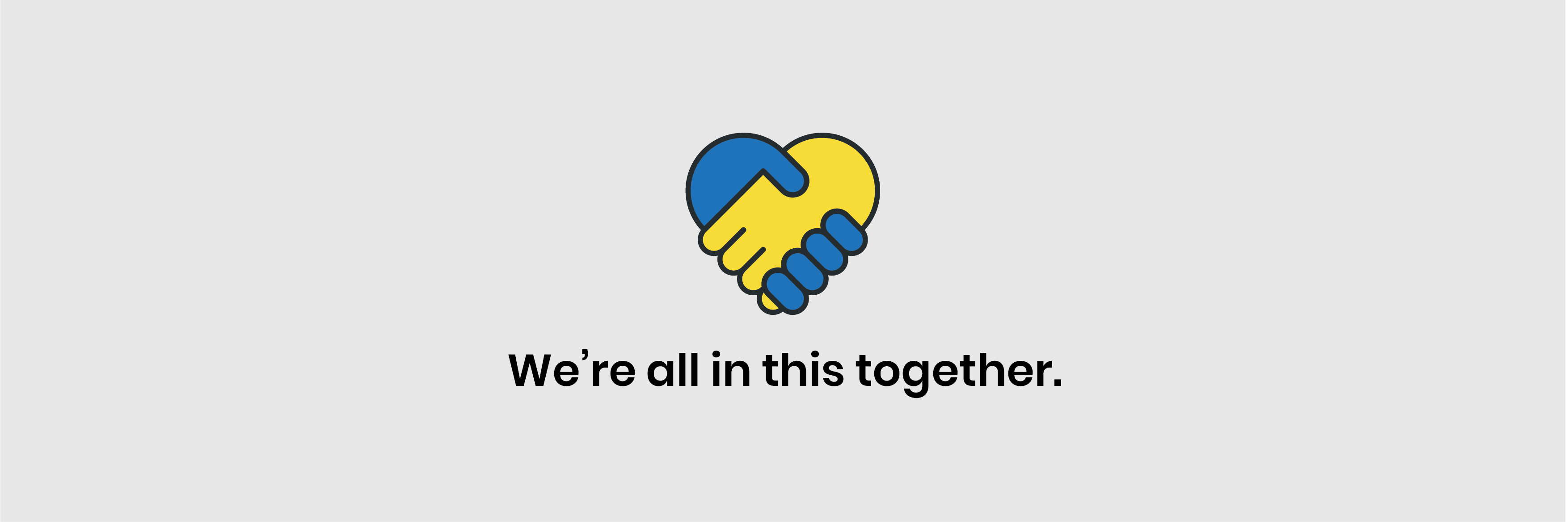CARES Act – Coronavirus Relief Loans to Businesses

On Friday March 27, 2020, the U.S. House of Representatives passes the Coronavirus Aid, Relief, and Economic Security Act (“CARES Act”), a massive stimulus package intended to counter the staggering economic effects of the novel coronavirus pandemic (“COVID-19”). The Senate previously passed the bill, 96-0. The President is expected to sign the bill into law shortly following its passage by the House.
Among its other provisions, the CARES Act includes appropriations of up to $349 billion in loans to small businesses and nonprofit organizations and up to $500 billion in loans, loan guarantees and debt investments in large and medium-sized businesses, nonprofit organizations, states and municipalities. Totaling $2.2 trillion in aid when combined with other relief and stimulus measures in the legislation, the CARES Act is the largest emergency stimulus package in U.S. history.
What are my next steps?
- Review our summaries of the loan programs below, and familiarize yourself with the CARES Act, particularly Sections 1001, 1002, 1006, 1112, and 4001 through 4003. A copy of the CARES Act can be found here.
- Meet with your bank or other lender, and ask to discuss your eligibility for loans under the CARES Act. They can help you evaluate whether your business may qualify for SBA loans or loan programs for mid-sized or large businesses.
1. Who does the CARES Act actually help?
- The stimulus and recovery loan portions of the CARES Act broadly assist several different groups:
- Through June 30, 2020, small businesses (up to 500 employees) are eligible to apply for a Paycheck Protection Loan, a new type of Section 7(a) loan guaranteed through the Small Business Administration (SBA). Also, businesses which already qualify as “small business concerns” under SBA rules, nonprofit organizations, veterans organizations and Tribal business concerns, each with up to 500 employees, may apply.
- Small business concerns (as determined by employee headcount or annual revenue criteria set by the SBA and which vary by industry) can benefit from improvements to the SBA’s existing Section 7(a) loans SBA Express Loans, and Economic Injury Disaster Loans (EIDL) programs.
- Medium-sized businesses (500-10,000 employees), large businesses (over 10,000 employees), states and municipalities are benefited through Economic Stabilization and Assistance Loans. Most businesses who qualify can apply for financing from banks and other lenders who receive funds from the Department of the Treasury to make direct loans to mid-sized and large United States businesses.
- Loans and loan guarantees may be made directly by the Department of the Treasury to air carriers and related businesses as well as businesses deemed critical to maintaining national security.
2. I own a small business / I am a sole proprietor. What sort of stimulus relief loan could my business qualify for?
- As the owner of a small business (a business with up to 500 employees or otherwise a “small business concern” under SBA rules), your business could qualify for Paycheck Protection Loans. In addition, if my business is a “small business concern,” it may apply for existing and improved SBA loan programs such as Express Loans or Economic Injury Disaster Loans (EIDL).
3. What is a Paycheck Protection Loan and how would my business qualify?
- Paycheck Protection Loans will be made between February 15, 2020 and June 30, 2020. Your business must have been in operation on or before February 15, 2020 and must have had employees for whom it paid salaries and payroll taxes or paid independent contractors as reported on IRS Form 1099-MISC.
- To qualify, your business must make certain certifications, including that the loan is necessary to support its ongoing operations due to current uncertain economic conditions, that the proceeds will be used to retain employees and maintain payroll, and that it hasn’t applied for, and hasn’t received proceeds of, any other paycheck protection loan.
- Paycheck Protection Loans are available to any business, nonprofit organization, veterans organization or Tribal business concern that either (i) employs 500 or fewer employees (including those employed on a full-time, part-time or other basis) or (ii) is a “small business concern” under existing SBA rules. Depending on the sector, a business that has more than 500 employees in total, but that employs 500 or fewer employees per physical location of the business and has a North American Industry Classification System (NAICS) code beginning with “72”, could still qualify for Paycheck Protection Loans. This exception includes businesses such as hotels, motels, casino hotels, bed-and-breakfast and other traveler accommodations, RV parks, campgrounds, recreational and vacation camps, rooming and boarding houses, dormitories, workers’ camps, restaurants, bars, food trucks, caterers, and food service contractors.
- Finally, any individual who operates under a sole proprietorship or as an independent contractor, and eligible self-employed individuals, could also meet the qualifications for a Paycheck Protection Loan.
- In some cases, employees of affiliated businesses are included in the headcount to determine whether the maximum number of employees is exceeded.
4. What benefits can a Paycheck Protection Loan provide for my business?
- The benefits provided by Paycheck Protection Loans include:
- (a) a fixed rate of interest at 4% per annum, with payments of principal, interest and fees deferred for a period of six months to one year of interest payments for one year;
- (b) loan forgiveness for costs incurred and payments made during the 8-week period following loan disbursement for items such as payroll costs (not exceeding $100,000 per employee per year), interest payments on mortgages entered into before February 15, 2020, rent payments on a lease entered into before February 15, 2020, and utility payments (electricity, gas, water, transportation, telephone or internet access) for which service began before February 15, 2020, with the amount of loan forgiveness not taxed by the IRS;
- (c) no personal guaranty or collateral is required;
- (d) there is no prepayment penalty;
- (e) unlike other SBA loan programs, the loan does not require a certification that the business cannot obtain credit elsewhere; and
- (f) unless the loan proceeds are used for non-permitted purposes, the SBA will have no recourse against the owners of the business for nonpayment of the loan.
5. What can my business use the proceeds of a Paycheck Protection Loan for?
- Proceeds can be used for: payroll; insurance premiums and costs to continue group health care benefits during periods of paid sick, medical or family leave; employee salaries, commissions and similar compensation; mortgage interest payments; rent payments; utility charges; interest on other indebtedness incurred before February 15, 2020; and refinancing economic injury disaster relief loans under SBA Section 7(b)(2) made on or after January 31, 2020.
6. How much money is my business eligible for through a Paycheck Protection Loan?
- The maximum amount available under a Paycheck Protection Loan is the lesser of (a) $10 million, or (b) 2.5 times average monthly payroll (during the 1-year period before the date on which loan is made, or during a different period for seasonal businesses), plus the outstanding balance of any SBA economic injury disaster relief loan made between January 31, 2020 and the date the Paycheck Protection Loan is available to be refinanced.
7. What is an SBA Express Loan?
- An SBA Express Loan is a financing option that has been available to small and medium size business owners prior to enactment of the CARES Act. The CARES Act simply revises the loan terms of this type of loan so that through December 31, 2020, the maximum amount that may be borrowed is increased from $350,000 to $1,000,000.
8. What is an Economic Injury Disaster Loan?
- Similar to an SBA Express Loan as noted above, the Economic Injury Disaster Loan is a financing option that has been available to businesses. Under the CARES Act, during the period from January 31, 2020 through December 31, 2020, this loan program has been expanded to include not only a “small business concern,” but also a business, a cooperative, an employee stock ownership plan, or a Tribal business concern having not more than 500 employees; a private nonprofit organization; a small agricultural cooperative; and any individual who operates under a sole proprietorship or as an independent contractor, with or without employees.
- For any Economic Injury Disaster Loan made between January 31, 2020 and December 31, 2020:
- (a) no personal guarantee will be required on advances and loans of less than $200,000;
- (b) there is no requirement that the applicant have been in business for the one-year period before the disaster, so long as the business was in operation on January 31, 2020;
- (c) there is no requirement that the applicant be unable to obtain credit elsewhere;
- (d) an applicant may be approved based solely on its credit score (no tax return is required); and
- (e) an applicant may request that the SBA make an emergency advance up to $10,000 within three days after it receives the application, and no repayment is required, even if applicant is subsequently denied the loan.
9. What if I have an existing SBA loan? Will it be impacted by the CARES Act?
- Yes. For any SBA-guaranteed Section 7(a) loans (other than Paycheck Protection Loans) in regular servicing status made before the CARES Act is enacted, or during the six month period after enactment, the SBA will pay all scheduled principal, interest and fees due during such period. Your payments will resume after the six month period ends, but you will not be responsible to the lender or the SBA for the principal, interest or fees scheduled to be paid during the subsidy period and paid by the SBA.
10. I own a large or medium-sized business such that I don’t qualify for the stimulus loans described above. Am I out of luck, or does the CARES Act provide assistance for me?
- As the owner of a large business (a business with greater than 10,000 employees) or a medium sized business (501-10,000 employees), your business could qualify for Economic Stabilization and Assistance Loans or loan guarantees. These are loans or loan guarantees made or facilitated, or debt securities purchased, by the Department of the Treasury to support passenger and cargo air carriers as well as other United States businesses that have not otherwise received adequate economic relief through loans and loan guarantees under the CARES Act.
- For a large business, qualifying for this type of loan requires a determination by the Treasury Department that, among other things:
- (a) credit from other sources is not reasonably available to the applicant;
- (b) the loan or loan guaranty is sufficiently secured or is made at risk-appropriate, market rates;
- (c) the duration of the loan or loan guarantee is as short as practicable and in no event longer than five (5) years;
- (d) the applicant will not use the funds to repurchase equity investment while the loan or loan guaranty is outstanding; and
- (e) the business maintains its existing employment levels as of March 13, 2020.
- For mid-sized businesses, the CARES Act sets up a program for the Department of the Treasury to providing financing to banks and other lenders to then make direct loans to eligible mid-sized businesses and nonprofit organizations. The interest rate is capped at 2% per annum. For the first six months after disbursement (or longer if determined by the Treasury Department), no principal or interest is due and payable.
11. Why may an Economic Stabilization and Assistance Loan not be for my business?
- The large business loan program is available only to businesses for which the Treasury Department determines that:
- (i) credit is not reasonably available;
- (ii) the loan is being prudently incurred;
- (iii) the loan or loan guarantee is adequately secured or is made at a rate that reflects the risk of default and (where possible) is at least equal to market rates for comparable obligations;
- (iv) the loan or guarantee is as short as practicable but in no event more than five years;
- (v) until 12 months after the loan is repaid in full or the loan guarantee ceases to be in force, the loan agreement prohibits purchases of public equity securities of the business or its parent or the payment of dividends or other capital distributions on its common stock;
- (vi) the agreement requires the business to maintain its employment levels as of March 24, 2020, through September 30, 2020, to the extent practicable, and in any case shall not reduce its employment levels by more than 10% from levels as of March 24, 2020;
- (vii) the business is incorporated or organized in the United States and has significant operations in and a majority of its employees based in the United States; and
- (viii) the business has incurred or is expected to incur direct or indirect losses as a result of the coronavirus such that its continued operations are jeopardized.
- A medium-sized business applicant must make good faith certifications that:
- (i) uncertain economic conditions makes the loan necessary to support the recipient’s ongoing operations;
- (ii) loan proceeds will be used to retain at least 90% of the recipient’s workforce, at full compensation and benefits, through September 30, 2020;
- (iii) the recipient intends to restore at least 90% of its workforce that existed as of February 1, 2020, and to restore all compensation and benefits to its workers no later than four months after the termination of the COVID-19 emergency declared by the Department of Health and Human Services;
- (iv) the recipient is domiciled in the United States with significant operations and employees in the United States;
- (v) the recipient is not a debtor in a bankruptcy proceeding;
- (vi) the recipient is incorporated or organized within the United States and has significant operations in and a majority of its employees in the United States;
- (vii) the recipient will not pay dividends to its stockholders (or, presumably, distributions to members or partners) or repurchase any equity security of the recipient or its parent that is listed on a securities exchange while the loan is outstanding, except to the extent required under a contractual obligation in effect before the CARES Act is enacted;
- (viii) the recipient will not outsource or offshore jobs for the term of the loan and for two years after completing repayment of the loan;
- (ix) the recipient will not abrogate existing collective bargaining agreements for the term of the loan and for two years after completing repayment; and
- (x) the recipient will remain neutral in any union organizing effort for the term of the loan.
This post was reprinted with permission from Holland and Hart.
For more information, please visit Holland and Hart's Coronavirus Resource Center and their blog post about How the $2.2 Trillion Relief Impacts Businesses and Employers.


